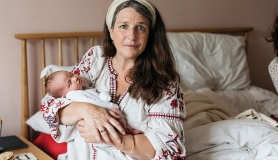Katherine is not alone in dealing with the terrible grief a suicide leaves behind: over 1 million people die by suicide worldwide every year, more than by murder and war combined. That’s one death by suicide every 40 seconds. According to the International Association of Suicide Prevention, approximately 5% of people attempt suicide once in their life, with between 10% and 14% experiencing suicidal thoughts throughout their lifetime.
FIGHTING STIGMA
Despite such a high number of suicides and the prevalence of suicidal thoughts, suicide is still surrounded by stigma. It’s actually thought that suicide numbers are far higher, but that they are under-reported because of social attitudes and religious reasons. That’s why this year’s World Suicide Prevention Day, which falls annually on 10th September, is focusing on stigma. According to Papyrus Prevention of Young Suicide, many of their members have experienced stigma: not wanting to speak about their experience, whether of suicide bereavement or suicidal behaviour or thinking. Negative attitudes towards people with mental health problems and/or suicide ideation or behaviour means that they feel isolated, discriminated against and unable to reach out for the help they so desperately need. Whilst many people have experience either of suicidal feelings themselves, or of suicidal feelings of friends or family, it is still an incredibly taboo subject. People who have lost a loved one through suicide struggle to speak openly about their loss in a society where mental health is shrouded in shame. I remember striking up a conversation with a mother whose son had committed suicide in his twenties, and the hushed and awkward way she described her loss spoke volumes about the way she felt such news would be received by others. She said that her greatest source of support had come from other parents in the same situation, because most people “either don’t understand, are embarrassed or really don’t want to know”.
2ND BIGGEST CAUSE OF ADOLESCENT DEATH
Tragically, suicide is the second biggest cause of death worldwide of 15-19 year olds, with 100,000 adolescents killing themselves every year. The recent death of UK schoolgirl Hannah Smith, who committed suicide after suffering cyber bullying on advice website Ask.fm, and of teen Daniel Perry who was a victim of an Internet blackmail scam that parents claim caused his suicide brought home just how much our young people need our love and support in a rapidly changing world. The Internet brings the world directly into our homes, and whilst this can be a fantastic source of learning and support for children, it clearly isn’t without some serious problems.
CYCLE ROUND THE GLOBE
This year, the International Association for Suicide Prevention (IASP) has planned a core activity for World Suicide Prevention Day called, “Cycle Around the Globe.” The circumference of the world is 40,075 kilometres or 24,900 miles. The challenge is to see if we can all contribute to collectively cycle this distance for World Suicide Prevention Day. It does not matter how far you can cycle, every kilometre or mile will be added to the total and there are no limits; you can cycle at home, in the gym or outside.
The idea behind this activity is all about the global community. The more people involved, the more we can spread the word about World Suicide Prevention Day and our combined stand against the stigma surrounding mental health issues and suicidal behaviour and ideation. As World Suicide Prevention Day involves the global community, we want to give you the opportunity to participate in an international activity and should you choose, to raise money for your local or national suicide prevention charity or similar organization.
Many people also choose to light a candle at 8pm on World Suicide Prevention Day, to remember lost loved ones and to unite in an effort to save lives. To find out more about what’s happening this World Suicide Prevention Day, visit the International Association for Suicide Prevention’s (IASP) website or Facebook page.







